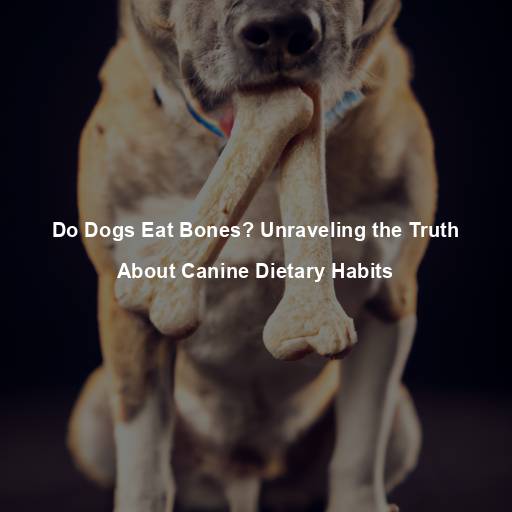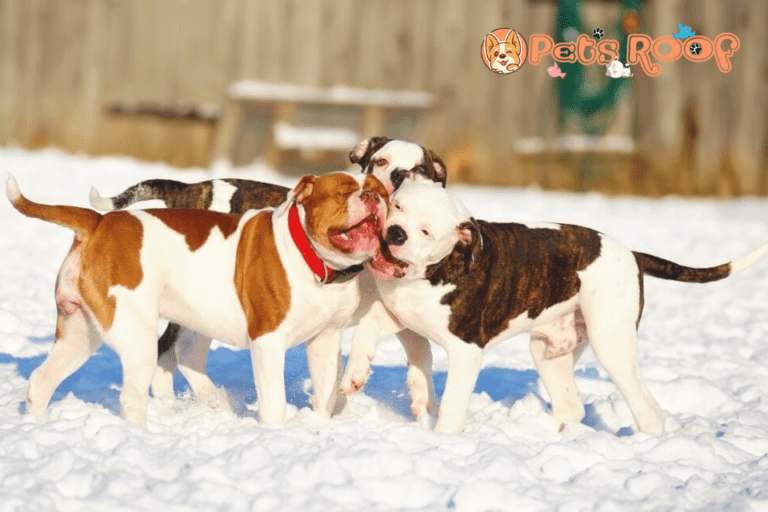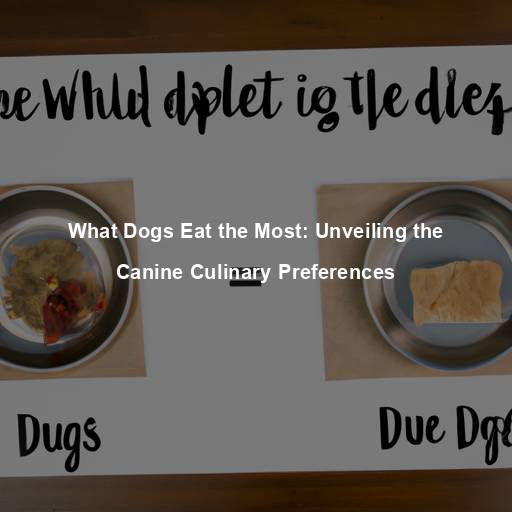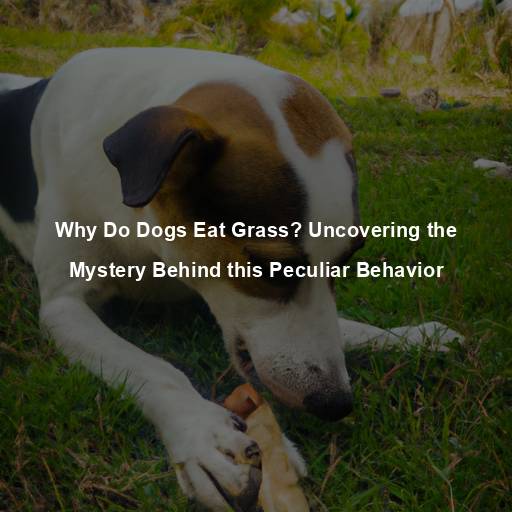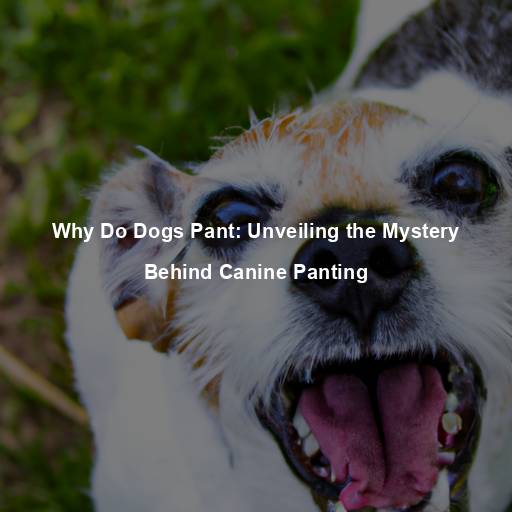Do Dogs Eat Bones? Unraveling the Truth About Canine Dietary Habits
Last Updated on July 13, 2023 by Evan
Contents
- 1 Understanding the Canine Digestive System
- 2 Pros and Cons of Feeding Dogs Bones
- 3 Types of Bones and Their Suitability for Dogs
- 4 Safe Alternatives to Bones
- 5 Consulting with Your Veterinarian
- 6 Addressing Common Misconceptions
- 6.1 Cooked Bones vs. Raw Bones: Which is Safer?
- 6.2 Bones as a Cure-All for Dental Health
- 6.3 Bones and Aggression
- 6.4 A Balanced Diet: The Key to Canine Health
- 6.5 Protein: The Building Block of Canine Nutrition
- 6.6 Calcium and Phosphorus: Essential Minerals
- 6.7 Vitamins and Minerals: The Role of Micronutrients
- 7 Safe Chewing Practices and Alternatives
- 8 The Final Verdict: Bones and Your Dog’s Diet
- 9 FAQs: Do Dogs Eat Bones?
Understanding the Canine Digestive System
As we embark on the fascinating journey of exploring whether or not our furry friends indulge in bone-chomping activities, let’s take a moment to unravel the complexities of the canine digestive system. These remarkable creatures, known as omnivores, possess an intricate apparatus tailored to handle a diverse array of sustenance. Over countless millennia of evolution, dogs have finely tuned their teeth, jaws, and stomachs to harmoniously process various nutrients with utmost efficiency.
The Chewing Mechanism: A Canine’s Natural Instinct
When it comes to our furry friends, chewing is more than just a simple habit, it’s practically ingrained in their DNA. With roots tracing back to their wolf lineage, dogs have an innate need to sink their teeth into just about anything within reach. Beyond dental health benefits, this chewing frenzy serves as a means to engage their minds, keeping them mentally stimulated and content while simultaneously alleviating any anxiety that may arise. So, don’t be alarmed if you catch your beloved pup enthusiastically gnawing on their favorite toy or even a bone – it’s just their way of embracing their natural inclinations.
The Debate: To Bone or Not to Bone?
The topic of whether or not dogs should munch on bones has ignited a fiery discussion among both devoted pet owners and knowledgeable experts. Those in favor of this practice argue that bones can provide a range of advantages, including promoting healthy teeth, keeping the mind active, and serving as a valuable source of vital nutrients. Nevertheless, opponents raise concern about the potential hazards linked to feeding bones to dogs, such as potential tooth damage, possible obstructions in the digestive system, and troubling gastrointestinal problems. The debate continues to baffle many, leaving pet owners perplexed about what’s best for their furry companions.
Pros and Cons of Feeding Dogs Bones
As we delve deeper into the topic, let’s unravel the intricate puzzle of feeding bones to our beloved pets. With a multitude of factors to consider, it becomes imperative to meticulously evaluate the advantages and drawbacks before embarking on this dietary journey. Grappling with the complexity of the issue, we strive to navigate the path that leads to informed decisions on whether to introduce bones into our canine companions’ meals.
Pros: The Potential Benefits
Taking care of your dental health has always been a perplexing task, but did you know that chewing on bones can actually contribute to a burst of oral hygiene? This surprising revelation suggests that the act of gnawing on bones may play a significant role in removing pesky plaque and tartar buildup. By incorporating this unconventional method into your routine, you might be on your way to flaunting a confident smile with healthier teeth and gums.
Bones offer a captivating and thought-provoking experience for our canine companions, ensuring they stay mentally stimulated and engaged. The intricate nature of chewing and exploring bones provides a unique opportunity for dogs to delve into their innate curiosity, offering a world of mental exploration and amusement.
3. Nutritional Value: Some bones, particularly raw bones, can be a source of essential nutrients like calcium and phosphorus.
Cons: The Potential Risks
While engaging in their natural instinct to chew, dogs may unwittingly cause dental harm by vigorously gnawing on bones. Such forceful habits can result in dental fractures, broken teeth, or even inflict damage upon the delicate gums of our furry friends. It is crucial for dog owners to be aware of these potential risks and take necessary precautions to safeguard their pet’s oral health.
2. Choking Hazard: Small bones or bone fragments can pose a choking risk, especially for smaller breeds or dogs who are prone to gulping their food.
3. Gastrointestinal Issues: Consuming bones can lead to digestive problems, such as constipation, diarrhea, or blockages, which may require veterinary intervention.
Types of Bones and Their Suitability for Dogs
Not all bones are created equal when it comes to canine consumption. Let’s take a closer look at the various types of bones and their suitability for dogs.
Raw Bones
When it comes to the controversial topic of raw feeding diets for dogs, there is a prevailing recommendation to include raw bones in their meals. Advocates argue that opting for softer and more pliable bones, like raw chicken wings or beef marrow bones, can potentially minimize any potential dental harm. Nevertheless, it’s imperative to exercise caution by choosing an appropriate size and closely watching over your furry friend as they indulge in their primal bone-tastic adventure.
Cooked Bones
It’s no secret that bones can be a tempting treat for our four-legged friends, but did you know that not all bones are created equal? Cooked bones, in particular, can be a potential hazard for dogs. The cooking process alters the structure of the bones, making them more prone to splintering and posing a risk to your pet’s delicate digestive system. To ensure your furry companion’s safety, it’s best to steer clear of feeding them cooked bones.
Commercially Produced Bones
When it comes to pampering our furry companions, the world of commercially produced dog bones is bursting at the seams. From synthetic wonders to carefully processed delights, the choices seem endless. But with such perplexity, how can one ensure a safe chewing experience for their beloved canine? Fear not, dear pet parent, for selecting the perfect bone for your furry friend requires careful consideration of their size, breed, and unique chewing tendencies.
Safe Alternatives to Bones
If the thought of giving your furry friend bones leaves you feeling uncertain, fear not! There are numerous safe alternatives out there that can quench your pup’s craving for a good chew. Take a leap into the world of canine temptations and ponder the following possibilities:
Looking for the perfect toy to keep your furry friend occupied? Look no further than our wide selection of rubber and nylon chew toys. These long-lasting delights are not only built to withstand even the most voracious chewers but also help to improve your dog’s dental hygiene. Get ready to watch your pup’s perplexity turn into pure delight as they gnaw away to their heart’s content.
2. Antler Chews: Antlers are a natural and long-lasting alternative to bones, providing a satisfying chewing experience without the risks associated with bone consumption.
3. Rawhide Chews: Rawhide chews, when sourced from reputable manufacturers, can be a suitable option for dogs who enjoy chewing. However, always supervise your dog while they‘re chewing on rawhide to prevent choking hazards.
Consulting with Your Veterinarian
Deciding whether to give your furry friend bones is quite a complex matter. It’s best to consult with your veterinarian as they possess a wealth of knowledge about your dog’s unique nutritional demands, health issues, and the potential hazards linked to bone intake. By seeking their expert guidance, you can receive tailor-made advice that aligns with your beloved pup’s specific needs.
Size Matters: Choosing the Right Bone
When it comes to picking the perfect bone for your furry friend, there’s a delicate balancing act at play. You want a bone that’s just the right size – not too small that it can be gulped down in a flash, but not too big that it turns into a formidable chewing challenge. To achieve this elusive equilibrium, take into account the unique characteristics of your dog, such as their size, breed, and their distinct chewing style. By carefully considering these factors, you’ll ensure a bone choice that keeps your pup happy and out of harm’s way.
Supervision is Key
It’s imperative to keep a watchful eye over your furry friend when they embark on their bone-chewing adventures. By actively monitoring their activities, you can swiftly address any unexpected situations that may arise, such as excessive gnawing or the bone posing a risk of choking. This cautious approach becomes even more paramount for canines who are novices to bone indulgence or have encountered previous dental complications. Stay attentive, and ensure their safety and enjoyment go hand in paw.
Raw Bones: Freezing for Safety
If you opt for feeding your dog raw bones, it’s recommended to freeze them before offering them to your furry friend. Freezing the bones can help kill any potential bacteria and parasites that may be present. Additionally, the cold temperature can provide soothing relief for teething puppies or dogs with oral discomfort.
Bone-Only Meals: Not Recommended
Feeding your dog a meal consisting solely of bones is not recommended. While bones can provide certain nutritional benefits, they should be seen as a supplement to a balanced diet rather than a primary source of nutrients. Consult with your veterinarian to ensure your dog‘s diet meets their specific nutritional requirements.
Addressing Common Misconceptions
There are several misconceptions surrounding dogs and bone consumption. Let’s address some of these to ensure a clearer understanding:
Cooked Bones vs. Raw Bones: Which is Safer?
When it comes to the age-old debate of feeding dogs bones, confusion often reigns supreme. Many people swear by the safety of giving dogs raw bones, arguing that they are less likely to splinter and cause harm compared to cooked bones. And while there may be some truth to that, it’s important to acknowledge that raw bones aren’t exempt from risks. Choking hazards and potential gastrointestinal troubles are still on the table if these bones are mishandled.
Bones as a Cure-All for Dental Health
Discover the untold secrets to ensuring your furry friend’s sparkling smile! While gnawing on those tantalizing bones may have its perks, let’s not forget that it’s not a one-size-fits-all solution for mastering dental health. Unleash the power of proper dental care by incorporating a routine of brushing, indulging in professional cleanings, and following a tailor-made dental-friendly diet prescribed by your trusted veterinarian. Because when it comes to your pup’s pearly whites, confusion ends and clarity begins!
Bones and Aggression
Contrary to popular belief, the notion that giving dogs bones can trigger aggression is a misperception that needs unraveling. Let’s get one thing straight – there is no solid evidence linking the consumption of bones to aggressive conduct in our four-legged companions. Canine aggression is influenced by a myriad of factors, ranging from their genetic predisposition and upbringing to their interactions with others and individual disposition. Seeking the assistance and expertise of a qualified trainer or behaviorist is crucial in addressing any behavioral quandaries that may arise.
A Balanced Diet: The Key to Canine Health
A balanced diet for dogs typically consists of a combination of proteins, carbohydrates, fats, vitamins, and minerals. These nutrients work together to support various bodily functions, including muscle development, immune system function, and overall vitality. It’s crucial to provide your dog with a diet that meets their specific nutritional requirements based on factors such as age, size, breed, and activity level.
Protein: The Building Block of Canine Nutrition
When it comes to keeping our furry friends in tip-top shape, protein reigns supreme. It’s the secret sauce behind all the muscle-building, tissue-repairing, and growth-spurting happening inside their precious bodies. Now, sure, bones make a cameo in the protein party, but let’s be real, they’re not the headliners. We’re talking about the A-listers here – lean meats and top-notch dog food that’s been specially crafted to pack a protein punch.
Calcium and Phosphorus: Essential Minerals
Calcium and phosphorus are crucial minerals for the development and maintenance of strong bones and teeth in dogs. While bones do contain these minerals, it is important to note that the ratio of calcium to phosphorus must be balanced for optimal absorption. Feeding an imbalanced amount of these minerals, which can occur when feeding large amounts of bones, may lead to health issues such as skeletal abnormalities or mineral imbalances. Therefore, it is crucial to consult with your veterinarian to ensure your dog’s diet provides the appropriate levels of calcium and phosphorus.
Vitamins and Minerals: The Role of Micronutrients
In addition to macronutrients like proteins, fats, and carbohydrates, dogs also require an array of vitamins and minerals to support their overall health. These micronutrients play essential roles in processes such as metabolism, immune function, and cell growth. While bones may contain small amounts of certain vitamins and minerals, a well-balanced diet that includes a variety of vegetables, fruits, and other nutrient-rich foods is typically the best way to meet these requirements.
Safe Chewing Practices and Alternatives
Chewing can be a bone-afide adventure for our furry friends, but let’s paw-se for a moment and talk about their safety first. While bones may provide a sense of gnawing satisfaction, it’s crucial to prioritize the well-being of our precious pups. But fret not, dear dog lovers! We’ve fetched some fabulous alternatives and handy tips to keep those wagging tails and happy tongues busy without any bone-ding concerns.
Supervision and Monitoring
It’s crucial to keep a close eye on your furry friend whenever they indulge in a bone or chew toy session. Remember to regularly examine these items for wear and tear, swiftly removing any fragments that could potentially cause choking. If you notice even the slightest shift in your dog’s behavior or have any concerns regarding their bone consumption, waste no time in seeking guidance from a trusted veterinarian. Safety first, always.
Safe Bone Alternatives
If you’re not keen on giving your furry friend bones to chew on, or if you’re worried about the potential hazards they might pose, fret not! There are numerous safe and viable alternatives out there for you to explore:
-
Dental Chews: Dental-specific chews, which are designed to promote oral health, can provide a safe chewing experience for your dog. Look for products that carry the Veterinary Oral Health Council (VOHC) seal, indicating they meet specific standards for effectiveness.
-
Kong Toys: Kong toys, which are made of durable rubber, can be filled with treats or peanut butter to provide a challenging and engaging chewing experience for your dog. These toys are designed to withstand vigorous chewing and can help redirect your dog’s chewing behavior.
Discover the captivating world of interactive puzzle toys for your furry companion. From treat-dispensing toys to puzzle balls, these brain-teasing delights offer both mental stimulation and blissful chewing satisfaction. Not only do they tap into your dog’s problem-solving skills, but they also ensure a captivating experience that keeps your beloved pet thoroughly engaged and entertained. Prepare to unlock a world of enchantment for your four-legged friend!
Consultation with a Veterinary Nutritionist
When it comes to your beloved canine companion’s dietary needs, seeking expert advice is key. Enter the realm of veterinary nutritionists, the masters of tailoring unique diets that cater to your dog’s individual requirements. By factoring in variables like age, breed, health conditions, and even personal preferences, these professionals can craft a meal plan that ticks all the boxes. From safe chewing guidelines to making informed nutritional choices, they’ve got your furry friend covered.
The Final Verdict: Bones and Your Dog’s Diet
After much consideration, it seems the matter of dogs consuming bones is far from straightforward. While bones can indeed offer certain advantages, like promoting oral hygiene and providing mental stimulation, there are also inherent dangers attached. It’s imperative to take into account the unique requirements of your furry companion, seek guidance from a trusted veterinarian, and prioritize their safety and holistic welfare.
Feeding bones to dogs should be approached with caution and proper preparation. Choosing the right type and size of bone, supervising your dog while they chew, and considering safe alternatives are all essential steps in ensuring a positive chewing experience without compromising your dog’s health.
Like humans, dogs are individuals with their own unique tastes and dietary requirements. It’s important for dog owners to stay knowledgeable about canine nutrition, seek expert advice, and make careful choices to ensure their furry friends receive a well-rounded and nourishing diet. By putting their canine companions’ well-being and happiness first, dog owners can navigate the perplexing world of dog food options and make informed decisions.
As we navigate through the vast tapestry of life, let us hold dear the ethereal connection between ourselves and our beloved four-legged companions, their playful paws forever imprinted upon our hearts. In this grand symphony of existence, let us, with steadfast determination, place the welfare of these cherished creatures atop the pinnacle of our priorities. With each passing moment, may we revel in the splendor of this unbreakable bond, a blissful enigma that leaves us both perplexed and utterly bewitched.
FAQs: Do Dogs Eat Bones?
Can dogs eat bones?
Yes, dogs can eat bones but not all bones are safe for them. It is important to distinguish between bones that are safe and those that can be harmful or even fatal if ingested by dogs. Certain types of bones, such as cooked bones, can splinter and cause serious internal injuries. Therefore, it is crucial to offer dogs appropriate and safe bones to chew on.
What types of bones are safe for dogs?
Feast your eyes on the tantalizing world of canine cuisine, where raw, succulent bones hold the key to untamed delight. From mouthwatering chicken wings to necks of majestic turkeys, and even the hearty marrow bones of beastly cattle, the possibilities are as limitless as a dog’s ravenous appetite. However, navigating this meaty maze can be as befuddling as a pup encountering a bone for the first time. To ensure your furry friend’s well-being, it’s merely prudent to seek the sage advice of a veterinarian before embarking on this enigmatic culinary adventure.
Why do dogs chew on bones?
There’s something fascinating about how dogs feel an inherent urge to sink their teeth into bones. From reducing plaque buildup to offering mental stimulation, chewing bones can be a one-stop solution for their dental health and boredom. It’s perplexing yet delightful to observe how this basic instinct not only nourishes their natural desire to gnaw but also keeps them happily occupied.
Are bones beneficial for dogs’ teeth?
Chewing on appropriate bones can help maintain good dental hygiene for dogs. As they gnaw on bones, the scraping action of their teeth against the bone can help remove plaque and tartar buildup, promoting healthier gums and teeth. However, it is important to note that bones should never be a substitute for regular brushing or professional dental cleanings.
Can bones be a choking hazard for dogs?
Yes, bones can pose a choking hazard for dogs, especially if they are small, brittle, or cooked. Sharp bone fragments or splinters can get lodged in a dog’s throat or cause obstructions in their digestive system, which can be life-threatening. Therefore, it is crucial to always supervise dogs while they chew on bones and ensure the bones offered are appropriate in size and texture.
How should bones be introduced to a dog’s diet?
When it comes to adding bones to your furry friend’s mealtime, it’s crucial to ease them in gently and carefully monitor their response. Begin with modest portions and keep a watchful eye for any unfavorable signs like tummy troubles or the runs. Seeking guidance from a trusty vet is paramount in deciphering the ideal sort and portion of bones tailored to your unique pup’s needs.
Can all dogs safely consume bones?
No, not all dogs can safely consume bones. Dogs with certain health conditions, such as pancreatitis, dental problems, or a history of gastrointestinal issues, may be at a higher risk of complications if they consume bones. Additionally, puppies and older dogs may also have a harder time handling bones due to their developing or aging teeth. It is always best to consult with a veterinarian before giving bones to any dog.

